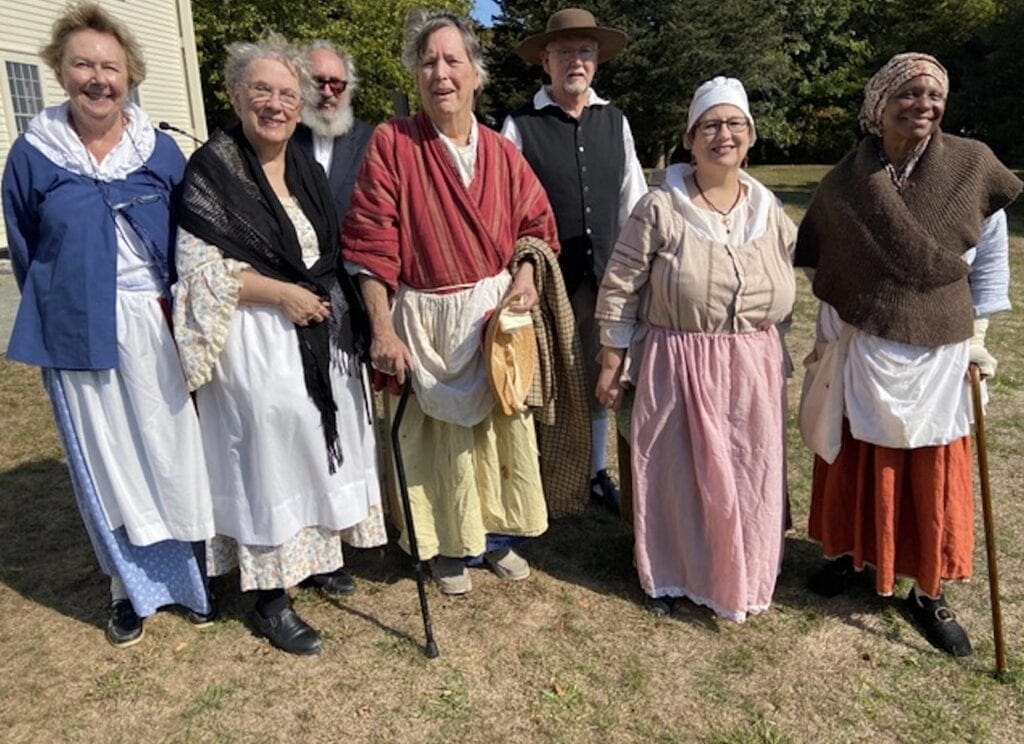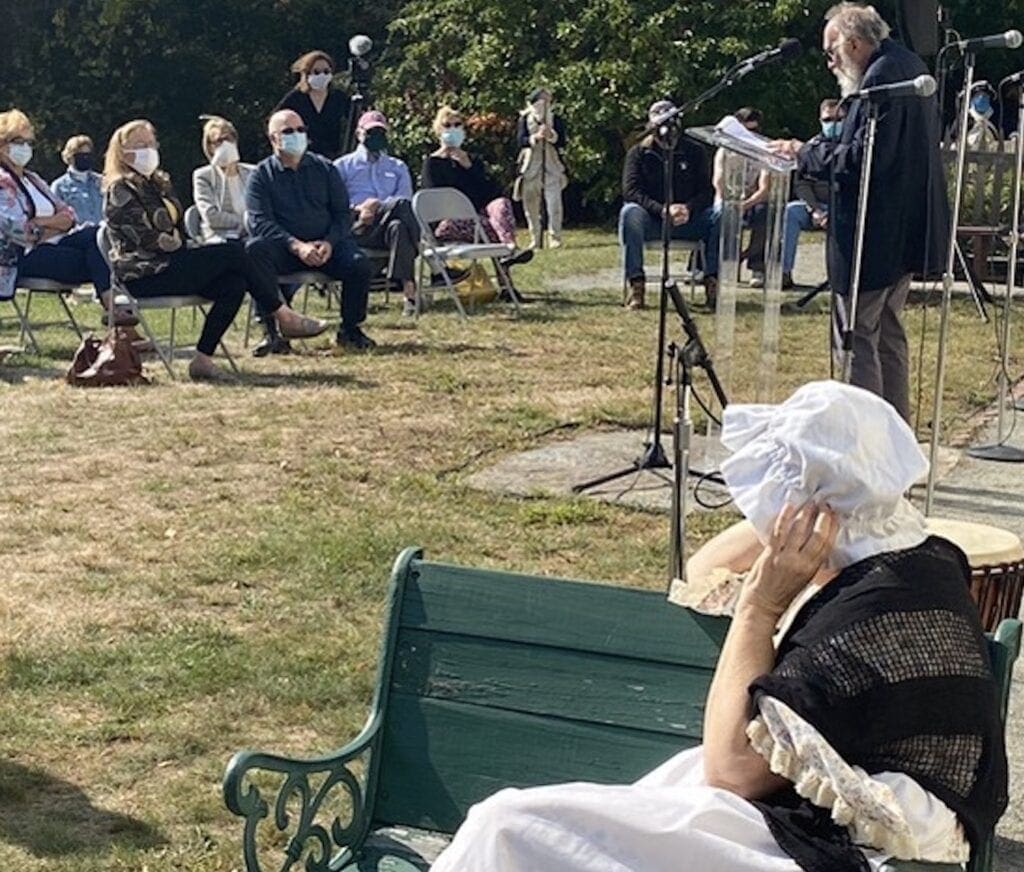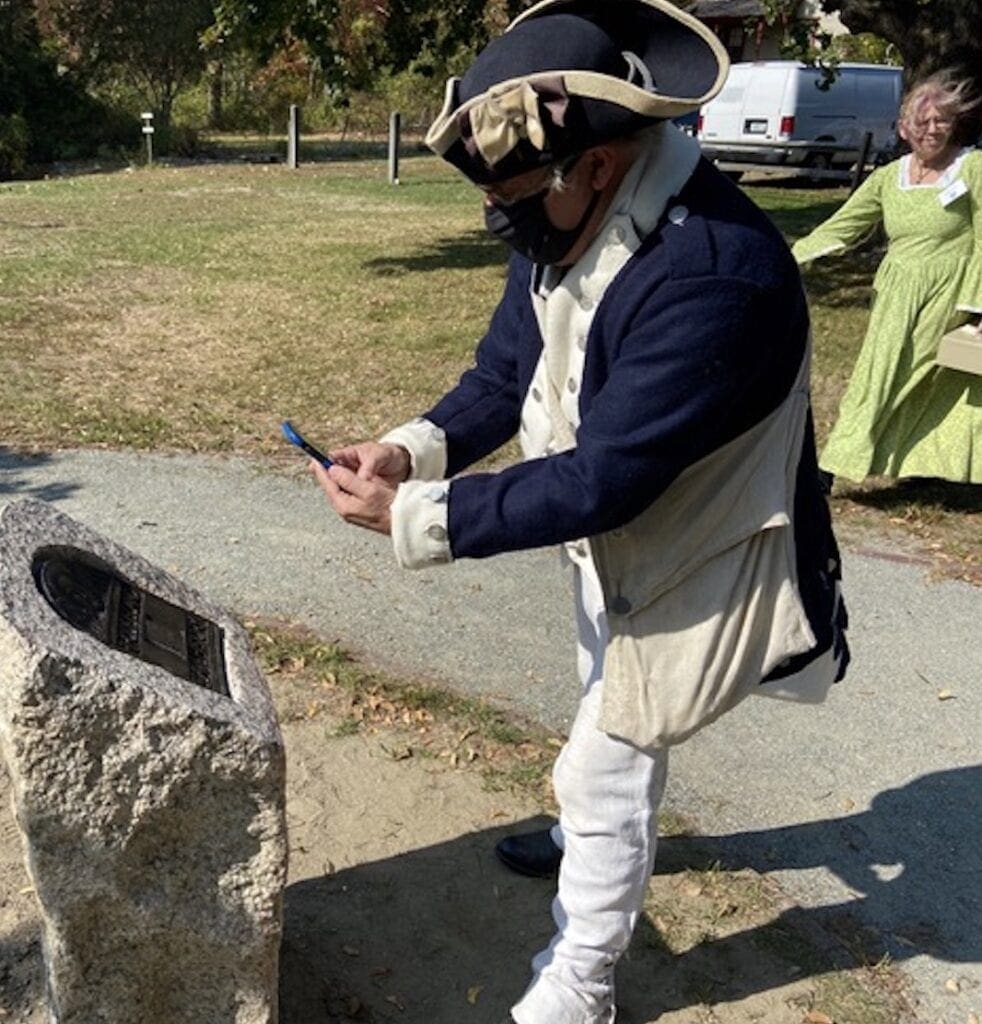Search Posts
Recent Posts
- In the News… a recap of news of the week, ending April 19th April 19, 2025
- We Cook: Mill’s Tavern’s Long Island Duck Breast with carrot puree, pickled cherries, walnuts… April 19, 2025
- Burn with Kearns: A matter of honor, and neuroscience. Self defense 4 U – Kevin Kearns April 19, 2025
- Rabbis reflect on the meaning and observance of Passover – G. Wayne Miller, Ocean State Stories April 19, 2025
- Rhode Island Weekend Weather for April 19/20, 2025 – Jack Donnelly April 19, 2025
Categories
Subscribe!
Thanks for subscribing! Please check your email for further instructions.

3rd Slave History Medallion dedicated at Smith’s Castle
By Charles Roberts, Executive Director, RI Slave History Medallions
Photo, top: Lady Estelle Barada
About 100 mask-wearing, socially distanced citizens attended the celebration of the third Slave History Medallion in Rhode Island, including Jamestown City Manager Jamie Hainsworth, City Council Representative Susan Taylor of Newport, State Representative Lauren Carson of Newport, State Representative Julie Casimiro of North Kingstown, and Senator Bridget Valverde of East Greenwich, Narragansett, and North and South Kingstown. The dedication ceremony at Smith’s Castle was a rewarding experience for all.

The Smith’s Castle Installation Ceremony acknowledged the enslaved laborers who lived, worked and died on the property over the course of 150 years. Roger Williams built a trading post on this site in 1637 to trade with the Narragansetts after receiving the land from the tribe. Slaves were then brought to the Castle from the Caribbean by Richard Smith Jr. in the 1650’s and continued to be accrued during the plantation era, serving the Updike family until their relinquishment of the property in 1812. A large slave burial ground was found on this property. It held up to 200 graves by the close of the 18th century.
The Rhode Island Slave History Medallions (RISHM.org) is a non- profit organization dedicated to providing historically accurate stories and information about the economic development of the State of Rhode Island during the colonial period from 1638 to 1843 through the use of free labor provided by enslaved African and Native American people.
The Medallion plaque is an artist representation of the “Soul Effigy” angel image produced by the original enslaved stone carver Pompe Stevens who, in 1768, carved and signed one of the first pieces of African American artwork still existing in North America. When you scan the code on the medallion with your phone, historical information about that location comes up on your phone.
The event organizers followed all the COVID-19 protocols set by the state of Rhode Island for outdoor events, and volunteers took attendees digital temperature, and gathered names, phone numbers and email addresses as a precaution for contact tracing.
Over the next five years, we plan to place at least one medallion in each of the 25 Rhode Island cities and towns historically associated with the enslavement of people of color.
Charles Roberts, Executive Director
RI Slave History Medallions
98 Kay Street – Newport, RI 02840
https//www.RISHM.org – 401-339-3035
Lady Estelle Barada


